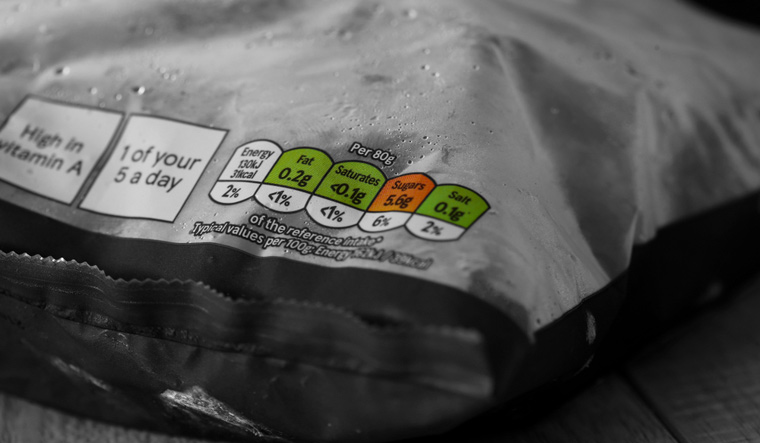A study by the ICMR-National Institute of Nutrition on acceptability and potential use of different formats of front-of-pack nutrition labels in promoting informed food choices suggests 'warning labels' can deter choice and consumption of even moderately unhealthy foods.
It also showed that 'summary ratings' like health star or Nutri-Score can help identify healthier variants among the available foods.
Summary labels provide a brief and concise overview of a product's key features and benefits, often including information about positive as well as negative nutrients. Warning labels, on the other hand, provide information about potential hazards associated with a product as they take into consideration the nutrients of concern like sugars, fats and salt.
Front-of-package labeling (FOPL) is usually seen as an important tool of public health communication about healthiness. Different formats of FOPNL are in use in different countries, either voluntarily or by mandatory implementation.
Meanwhile, the Food Safety and Standards Authority of India (FSSAI) is considering to implement a symbol-based FOPNL. However, context specific evidence on the effectiveness of FOPNL is needed to inform ongoing advocacy and regulatory processes in India.
The decision to the type of FOPNL used in a country should be based on local research, along with regional and global evidence, and in consideration of each country's specific objectives for developing a FOPNL policy.
Given this background, the current study tested the consumer acceptability, reliability and understandability as well as the cognitive workload, informativeness and purchase intention of five FOPNL formats, namely Nutri-Score (NS), Health Star Rating (HSR), Warning Labels (WL), Multiple Traffic Lights (MTL) and Nutri-Star Rating (NSR).

The NS and HSR are the FOPNL formats currently in vogue in Europe and Australia, respectively, and the FOPNL rating (colour coding from 'green' for healthy, 'orange' for moderately healthy and 'red' for unhealthy in case of NS, and number of stars in case of HSR) are based on both positive and negative nutrients.
The cross-sectional study, with a quasi-experimental design, was conducted among 3,231 participants from five regions of India - north (Delhi), east (Kolkata), west (Pune), south (Hyderabad) and northeast (Jorhat, Assam).
In the present study, it was observed that even though the percentage of participants reading nutrition information is low, those checking vegetarian/non-vegetarian symbols and quality symbols was higher.
Therefore, FOPNL on pre-packaged processed foods is likely to have a good uptake among the Indian population as they are symbol-based, it said.
The uniqueness of the study is also that the FOPNL formats were used on different variants of the mock packs of the same food. Unlike in other studies, different foods were not used to depict different labels.
"Therefore, the responses could be solely based on the understanding of the FOPNL without any preconceived perception about the healthiness of the product," said Dr Hemalatha R, Director, ICMR-NIN.
The study showed that warning labels (WL and NSR) deterred more people from choosing moderately healthy or unhealthy variants, whereas the summary labels made them look healthier.
Participants randomised to any of the FOPNL formats were able to identify healthiest and least healthy variants of foods, however, warning labels had greater impact in altering the health perception of the food products as presence of even one warning sign prompted more cautious behaviours in choosing the foods," said Dr SubbaRao M Gavaravarapu, the lead investigator of the study.



